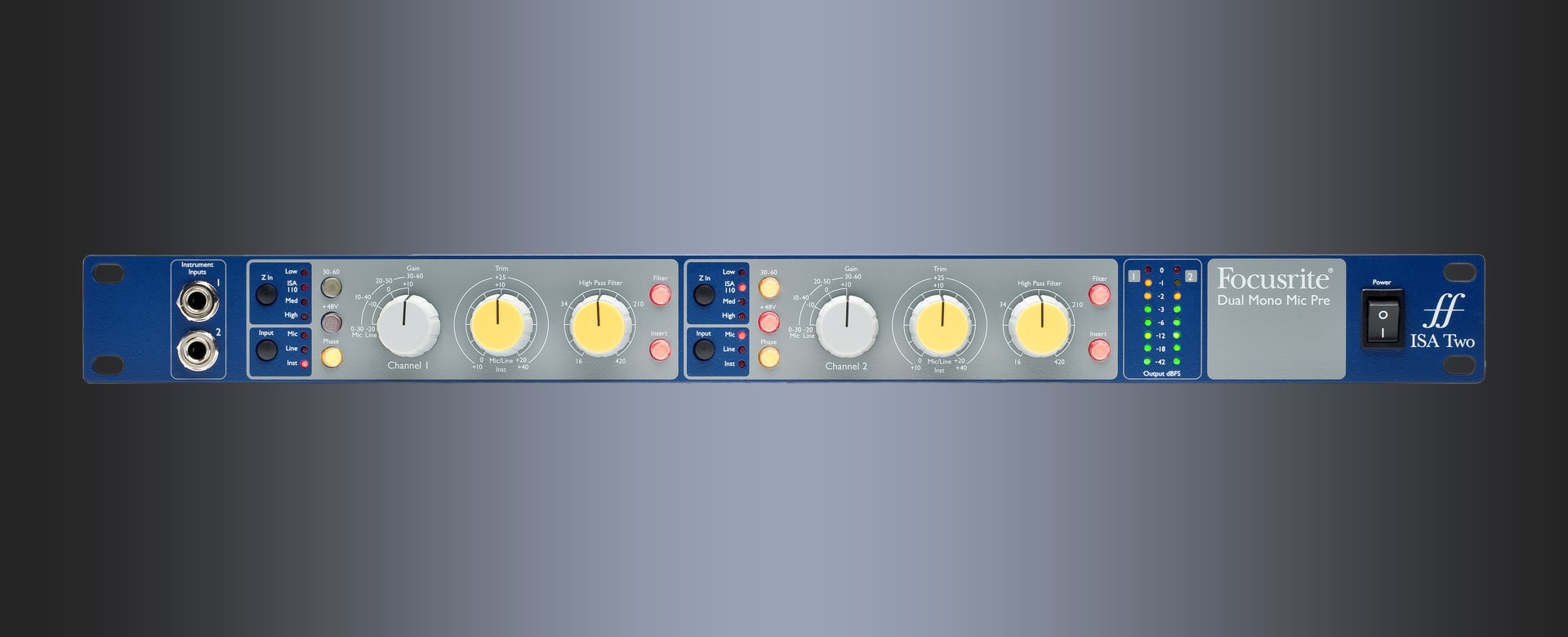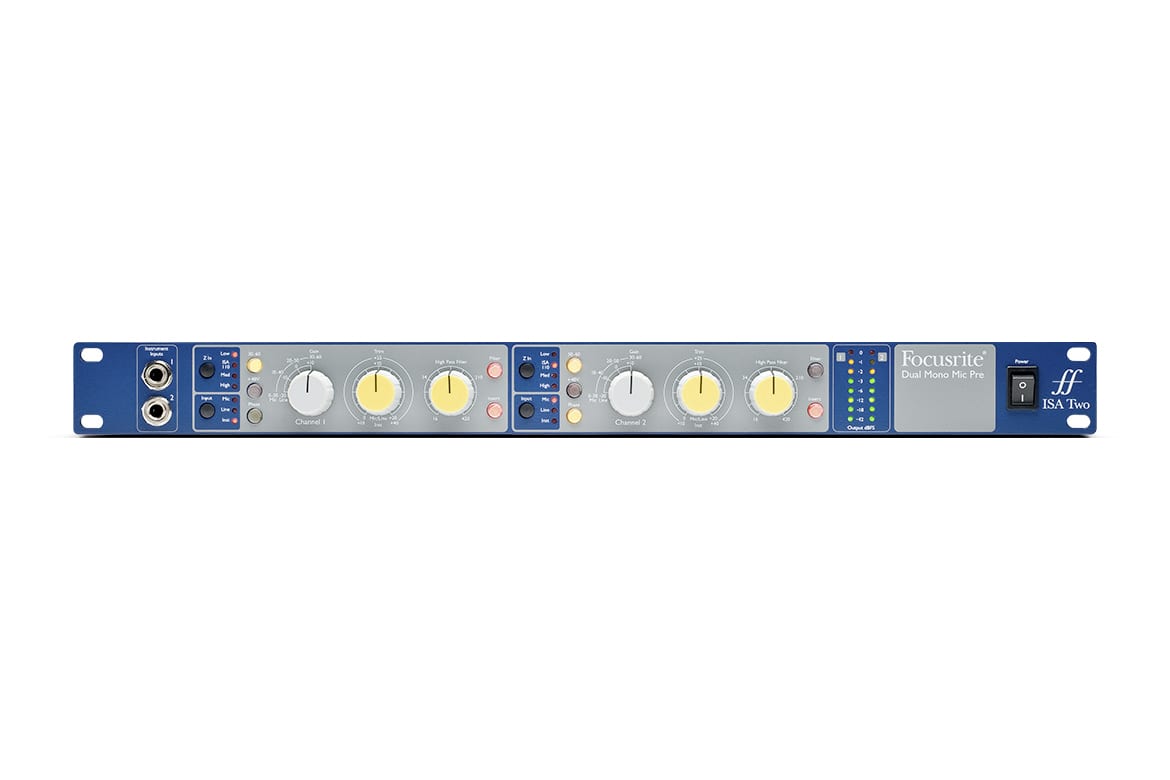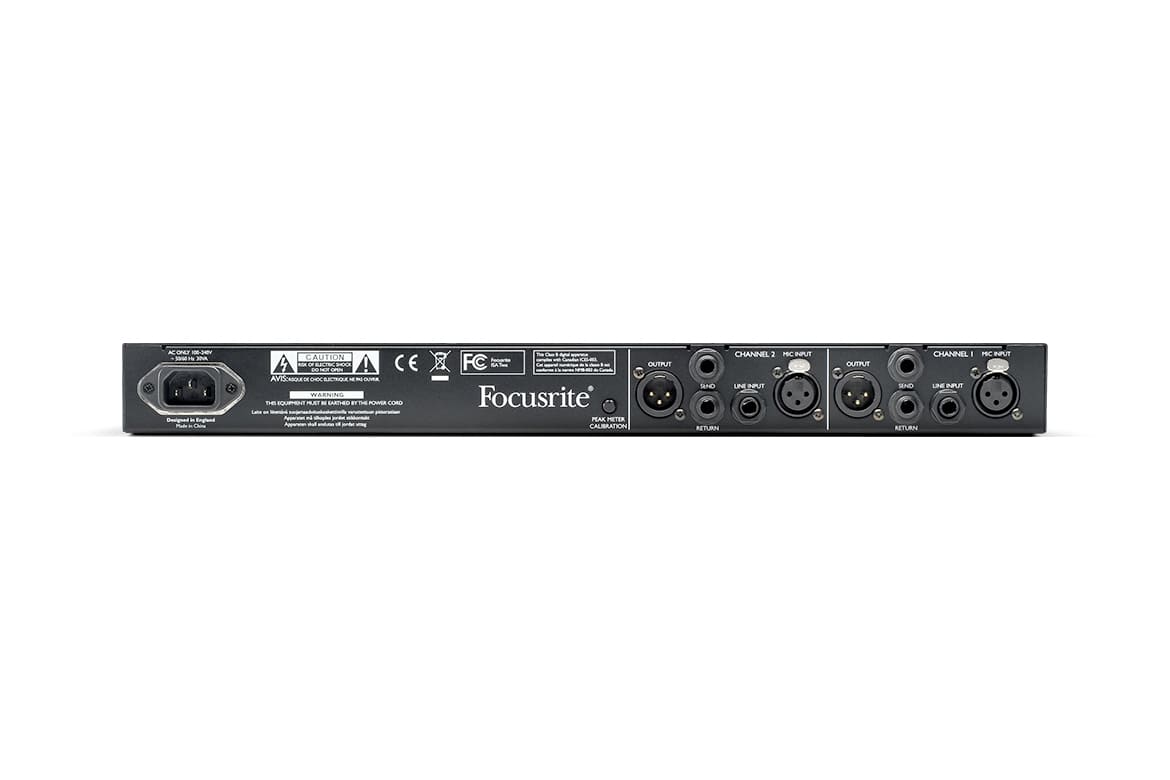ISA Two
Two Channels Of Classic Focusrite Mic PresProduct Highlights
- Classic ISA mic preamp design featuring Lundahl LL1538 input transformer
- Front-panel instrument inputs
- Dedicated TRS line input socket with front-panel switch
- Switchable input impedance including classic ISA 110 setting
- Dedicated insert points
- User-calibrated peak-level meters
- Overview
- Tech Specs
Focusrite's ISA Two brings together a totally independent pair of classic ISA microphone preamps from the original ISA 110 module, combining the best of traditional solid-state electronics with the original input transformer specified by Rupert Neve – the Lundahl LL1538.
Each mic pre has the option of mic, line or the front-panel instrument input, with variable input impedance to ensure you are getting the best performance from the source. Up to 60dB of gain is available on the first four-position rotary and gain range switches, with a further +20dB of continuously variable trim, meaning a huge 80dB of gain is available should it be required. The high-pass filter features variable cut-off frequency between 16 and 420Hz. A pair of 8-segment LED meters show peak signal level in dBFS, while a rear-panel pot allows calibration to suit your A-D converters. Rear-panel insert points allow the use of inline processors such as compression.
| MIC INPUT RESPONSE | |
| Gain Range (Mic) | 0 dB to 60 dB in 10 dB steps, plus 0 dB to 20 dB continuously variable trim |
| EIN (Mic) | Measured at 60 dB of gain with 150 O source impedance and 22 Hz-22 kHz band pass filter -127 dB |
| Noise (Mic) | Noise at output with unity gain (0 dB) and 22 Hz-22 kHz band pass filter -97 dBu |
| Frequency Response (Mic) | At minimum gain (0 dB)-0.5 dB at 10 Hz,?-1 dB at 135 kHz, relative to 1 kHz |
| At 60 DB Gain (Mic) | -6 dB at 10 Hz, -1 dB at 115 kHz, relative to 1 kHz |
| Crosstalk Channel To Channel (Mic) | Mic input, with I/P = 0 dBu, gain = 0 dB @ 1 kHz input to channel A, channel B output = -85 dB |
| LINE INPUT RESPONSE | |
| Gain Range (Line) | -20 dB to 10 dB in 10 dB steps, plus 0 dB to 20 dB continuously variable trim |
| Input Impedance (Line) | 10 kO from 10 Hz to 200 kHz |
| Frequency Response (Line) | At minimum gain (0 dB)-0.3 dB at 10 Hz, -1 dB at 80 kHz, relative to 1 kHz |
| Crosstalk Channel To Channel (Line) | Line input, with I/P = 0 dBu, gain = 0dB @ 1 kHz input to channel AChannel B output?= -91 dB |
| INSTRUMENT INPUT RESPONSE | |
| Gain Range (Instrument) | 10 dB to 40 dB continuously variable trim |
| Input Impedance (Instrument) | 2 MO |
| Noise (Instrument) | Measured with 22 Hz-22 kHz band pass filterMinimum gain ( 10 dB) = -95 dBu |
| Frequency Response (Instrument) | At minimum gain ( 10 dB)-0.1 dB at 10 Hz,?-1 dB at 115 kHz, relative to 1 kHz |
| At Maximum Gain ( 40 DB) (Instrument) | -2.5 dB at 10 Hz, ?-1 dB at 110 kHz, relative to 1 kHz |
| HIGH-PASS FILTER | |
| Roll-Off | 18 dB per octave (3 pole filter) |
| Frequency Range | Continuously variable from 16 Hz to 420 Hz (-3 dB) |
WEIGHT AND DIMENSIONS
- W X D X H: 480 mm x 280 mm x 44 mm
- Weight: 3.7 kg



